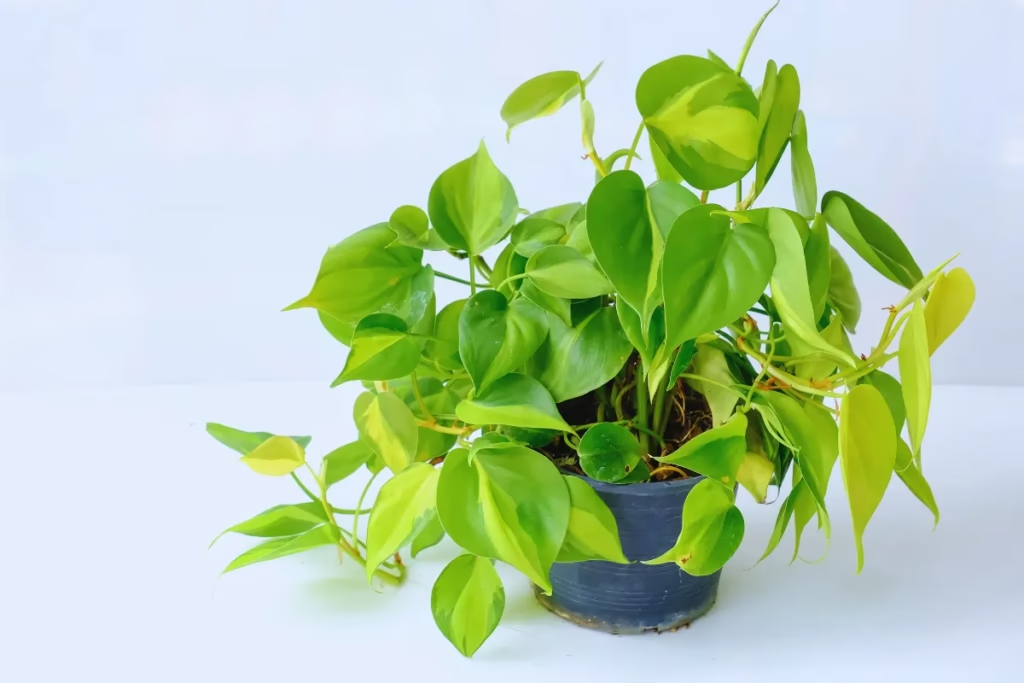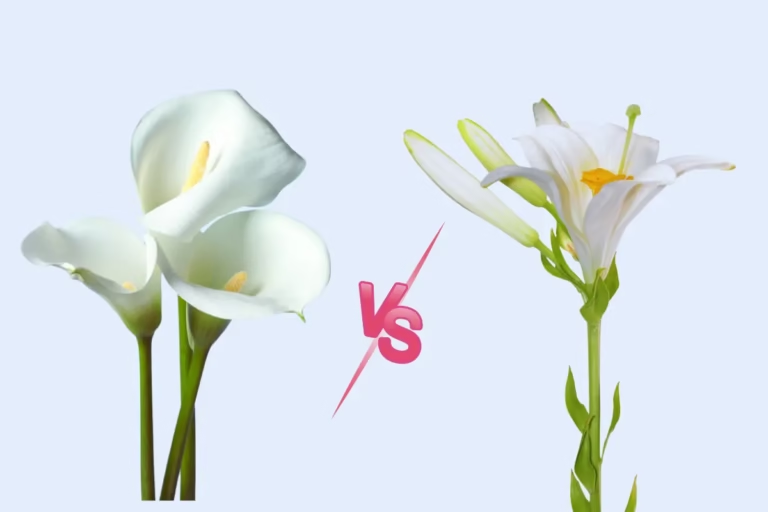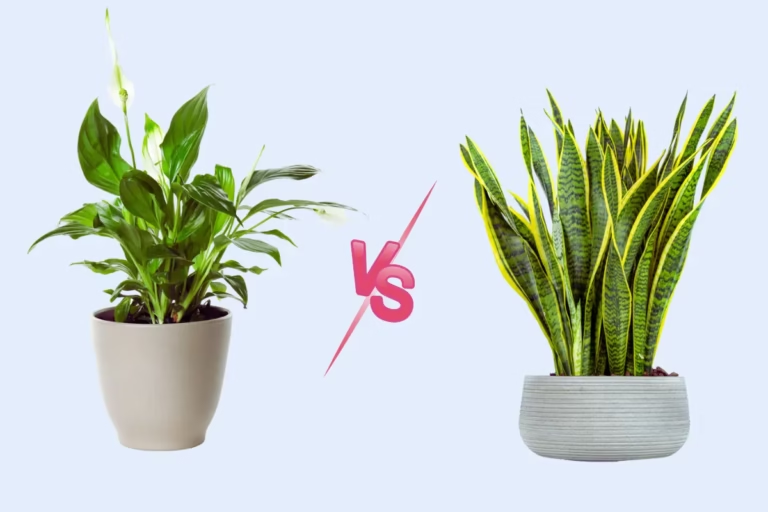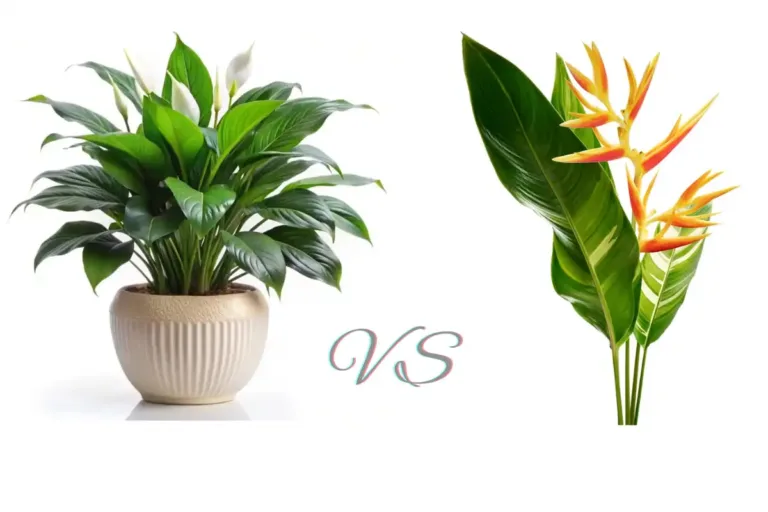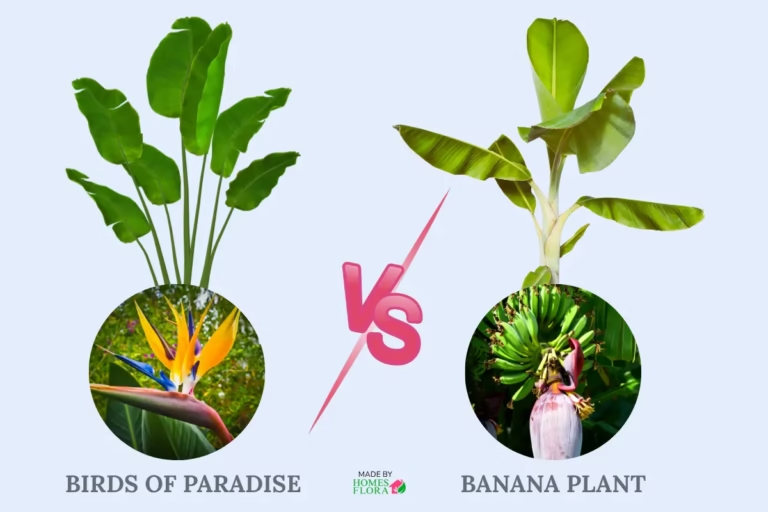Pothos Vs Philodendron: What’s the Difference and Best Pick

Among tropical houseplants, the topic of Philodendron vs Pothos often confuses. Philodendron hederaceum is one of the most popular plant that look almost like golden pothos. These two vining houseplants look very similar, both belonging to the Araceae family and loved for their easy care. Still, there are clear differences in leaf blade texture, petioles, and how they grow.
Pothos have strong, waxy leaves and adapt well to many indoor conditions, while Philodendrons have softer leaves and a more delicate trailing style. Knowing the difference between pothos and philodendron helps you choose the right plant and give it the care it needs to grow healthy and beautiful inside your home.
Pothos vs Philodendron: Quick Comparison Table
Here’s a side-by-side table showing pothos vs philodendron differences that you can notice even at first glance.
Feature | Pothos | Philodendron |
|---|---|---|
Background | Epipremnum genus | Philodendron genus |
Leaf Shape | Spade-shaped leaves with a defined leaf apex | Heart-shaped leaves with a deep leaf sinus |
Leaf Texture | Waxy leaves, thick and glossy | Thin leaves, softer leaf blade texture |
Aerial Roots | Thick nubs, often multiple aerial roots per node | Single aerial root per node, slender |
Petiole | Grooved petioles | Rounded petioles |
Sheaths | None | Present (brownish cataphylls) that fall when new leaves unfurl |
Growth Style | Climbing plants with faster spread | Trailing plants with denser foliage |
Variegation | Common in neon cultivars, silver variegation is possible | Usually green or variegated with lighter streaks |
Toxicity | Toxic to cats and toxic to dogs | Same toxicity level |
Understanding Pothos Plant
Pothos, also known as devil’s ivy. Its most popular variety, Epipremnum aureum, grows naturally in the tropical regions of Asia and the Pacific. Known for its waxy leaves and resilience, pothos adapts to bright indirect light or even low light tolerance, making it ideal for offices and living rooms.
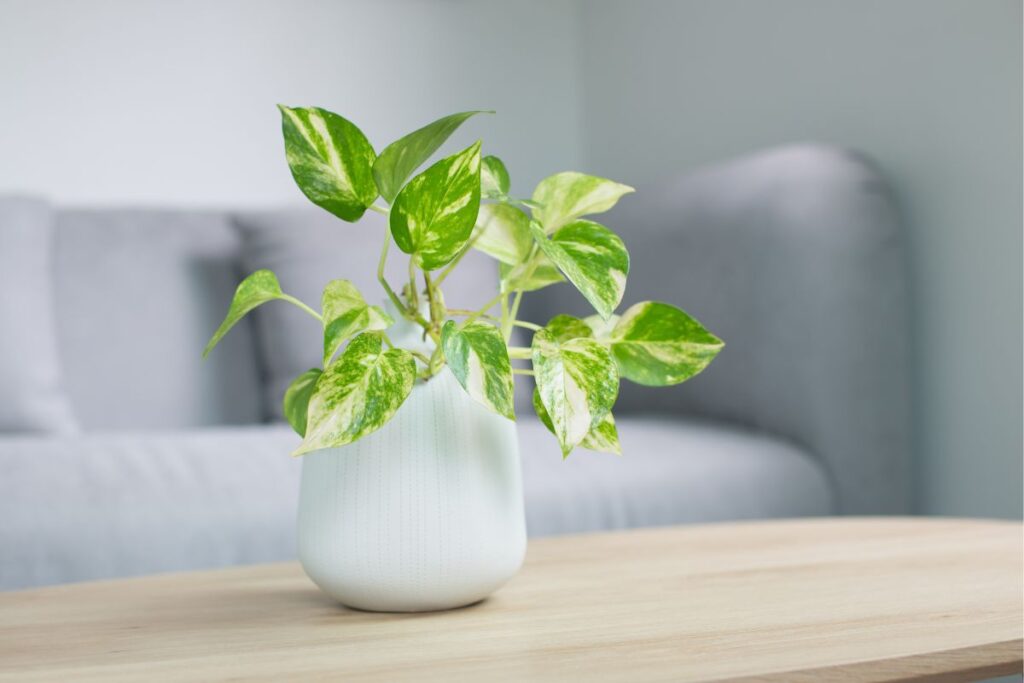
As climbing houseplants, pothos send out multiple aerial roots per node to grip moss poles or trellises. These roots are thick, forming thick nubs that anchor them securely. Their spade-shaped leaves often feature silver variegation or streaks in neon cultivars. Over time, mature plants can develop split leaves outdoors in tropical climates.
Understanding Philodendron Houseplant
Philodendrons belong to the Philodendron genus and are also part of the Araceae family. One of the most popular varieties you’ll see in homes is Philodendron hederaceum. oxycardium, known for its thin leaves and velvety leaf blade texture. Native to Central and South America, they thrive in warm, humid forests as trailing plants or slow-climbing plants.

These plants produce single aerial roots per node that are more Brittle than pothos roots. Their rounded petioles hold heart-shaped leaves with a noticeable leaf sinus near the stem. A distinctive trait is their brownish cataphylls that protect new leaf unfurling, often revealing pink-tinted new leaves in certain varieties.
Taxonomy and Botanical Classification
Both pothos and philodendrons are exotic indoor plants from the Araceae family, but they differ at the genus level — pothos belong to the Epipremnum genus, while philodendrons are part of the Philodendron genus. This is a classic example in plant taxonomy where similar appearance doesn’t mean close genetic relation.
Their botanical names reflect this difference: Epipremnum aureum for pothos and Philodendron hederaceum var. oxycardium for heartleaf philodendron. Understanding these names can prevent confusion when shopping online or reading indoor plant care tips from plant nurseries.
Leaf Shape, Size, and Texture
Pothos leaves are thicker, with waxy leaves and a shiny leaf blade texture that reflects light. Their spade-shaped leaves taper to a classified leaf apex. These traits make them feel sturdier in hand and better at withstanding drought.
Philodendron leaves are soft with a matte texture and feature a deeper curve, known as the leaf sinus, between their lobes. The thin leaves bend easily and feel cooler to the touch. This softness contributes to their lush, cascading look in hanging baskets.
Aerial Roots, Petioles, and Sheaths
Pothos plants grow multiple aerial roots per node that appear as thick nubs or sometimes spindly aerial roots in young plants. These are designed for gripping surfaces when acting as climbing houseplants.
Philodendrons usually form a single aerial root per node, and their rounded petioles contrast with the grooved petioles of pothos. Philodendrons also grow sheaths known as cataphylls, which cover leaves before they emerge and fall off once the new leaf unfurls.
Growth Habits and Lifespan
In the right environment, pothos grow faster than philodendrons, quickly covering a moss pole or cascading down from a shelf. They can survive for decades in containers, producing offsets or baby plants when mature.
Philodendrons have a denser, bushier growth pattern as trailing plants, making them perfect for hanging baskets. While slower-growing, they can live just as long with proper indoor plant care tips and occasional dividing of plants for rejuvenation.
Environmental Needs
Both plants can survive in low light. They flourish in bright, indirect light. Pothos are especially resilient, often bouncing back easily after a missed watering.
Philodendrons prefer consistent moisture and higher humidity. They both appreciate well-draining soil and similar soil requirements that include peat, perlite, and compost for steady growth.
Maintenance and Care Tips
Pothos are extremely low-maintenance houseplants. Water when the top inch of soil dries, feed monthly in spring and summer, and trim vines to encourage fullness.
Both plants root easily from stem cuttings in either water or soil. Philodendrons need similar care but tend to do better with slightly higher humidity. For climbing types, use a moss pole to mimic their natural growing conditions.
Related: Peace Lily vs. Calla Lily & Money Tree vs Umbrella
Special Case of confusion: Philodendron hederaceum Vs golden pothos
Philodenron and pothos, both have many varieties which can be differentiate easily on first sight but there is a special when plant expert also says: let me see clearly. Not all but most of the times plant lovers confuse to distinguish between the Philodendron hederaceum and golden pothos. Both of these plants are very similar to each other and difficult to label at first sight.
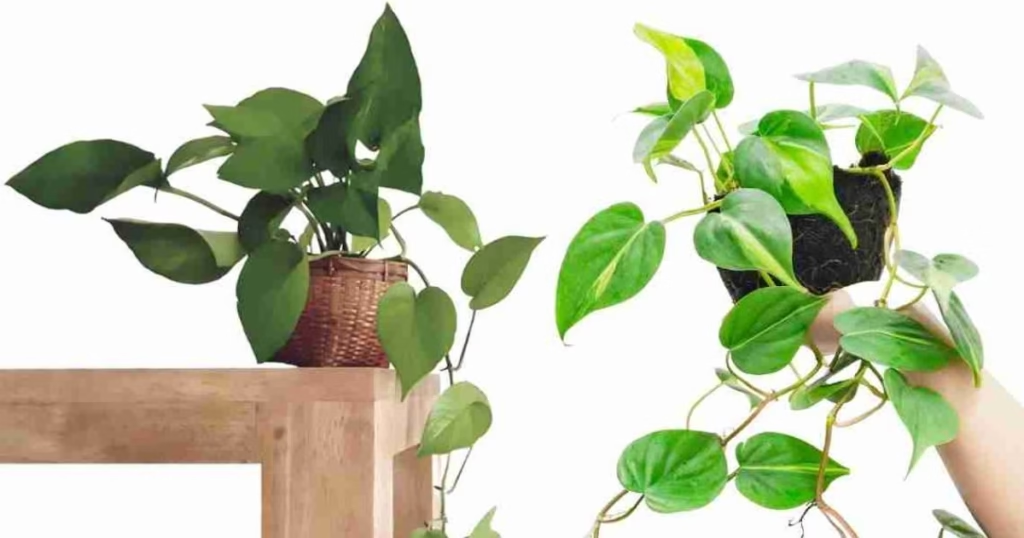
Popular Pothos Varieties
Varieties like Golden Pothos, Marble Queen, Jessenia, and Neon cultivars are staples in American homes. Each offers unique variegated leaves, with patterns ranging from creamy splashes to lime-green brilliance.
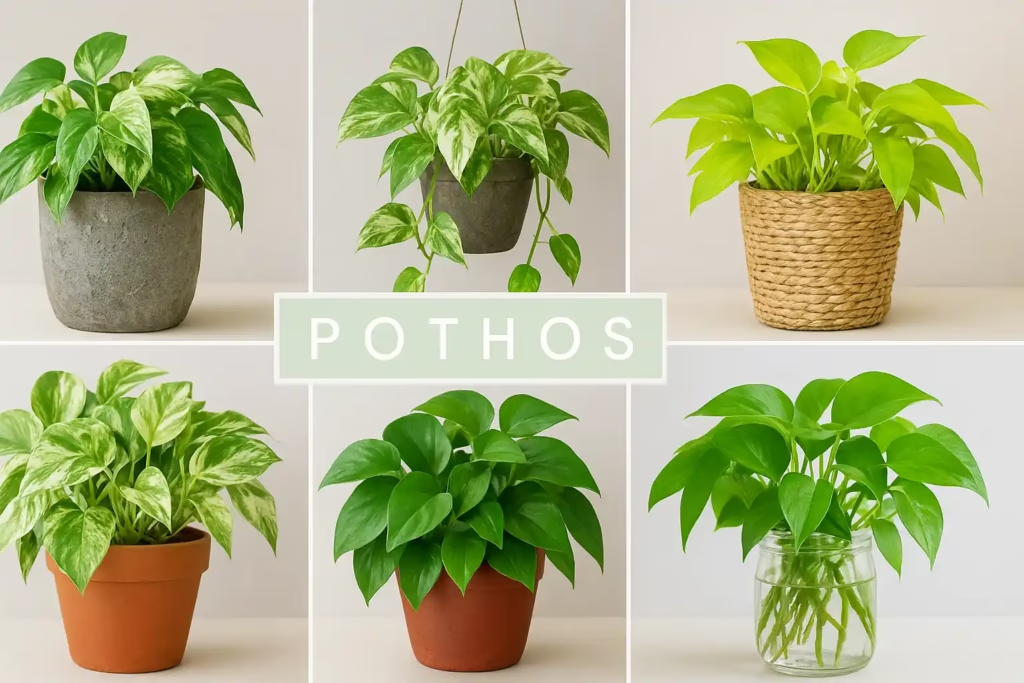
The satin pothos (Scindapsus pictus) isn’t a true pothos but is often sold alongside them due to its trailing habit and silver variegation.
Popular Philodendron Varieties
The Heartleaf Philodendron remains the most iconic with its classic green leaves. Brasil adds yellow streaks, while the Pink Princess sports pink-tinted new leaves for a striking contrast.
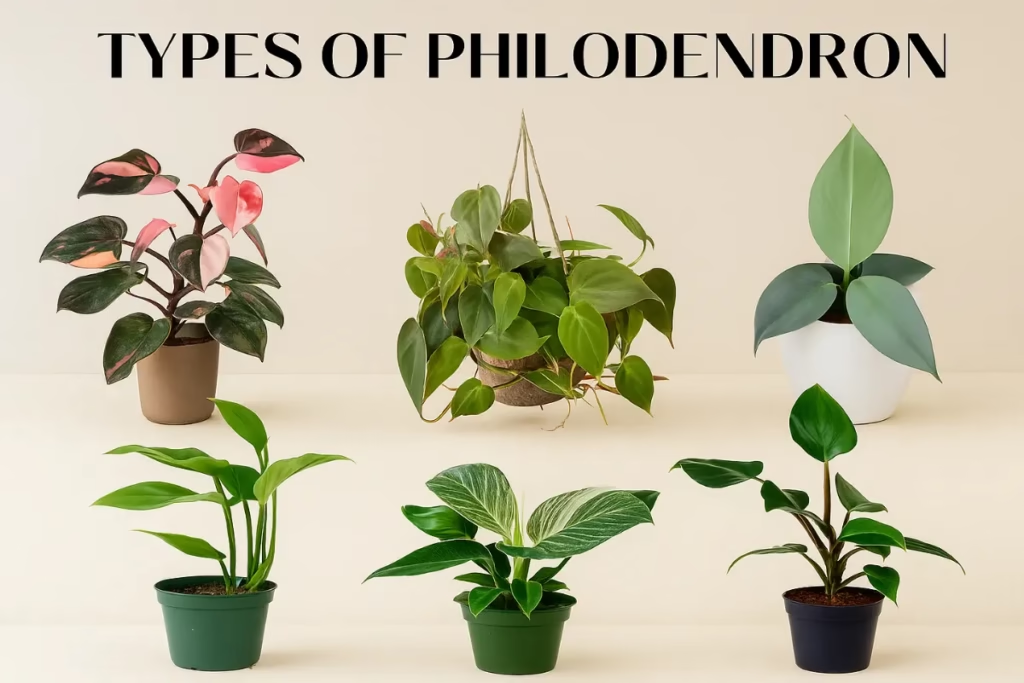
The Pigskin Philodendron stands out with a rougher leaf blade texture, making it one of the most unusual tropical houseplants in the market.
Common Mistakes in Identification
Many mistake satin pothos (Scindapsus pictus) for a true pothos because of its trailing habit and silver variegation. Others mislabel neon cultivars of pothos as philodendrons due to their bright chartreuse leaves.
Ignoring details like grooved petioles, leaf sinus shape, or the presence of sheaths often leads to wrong identification in garden centers.
Related: Peace Lily Vs. Chinese Evergreen & Peace Lily vs. Bird Of Paradise
Which One Should You Choose: Pothos or Philodendron
If you’re looking for a hardy plant that can handle a bit of neglect, go for pothos. It adapts well to different conditions and bounces back quickly after drying out.
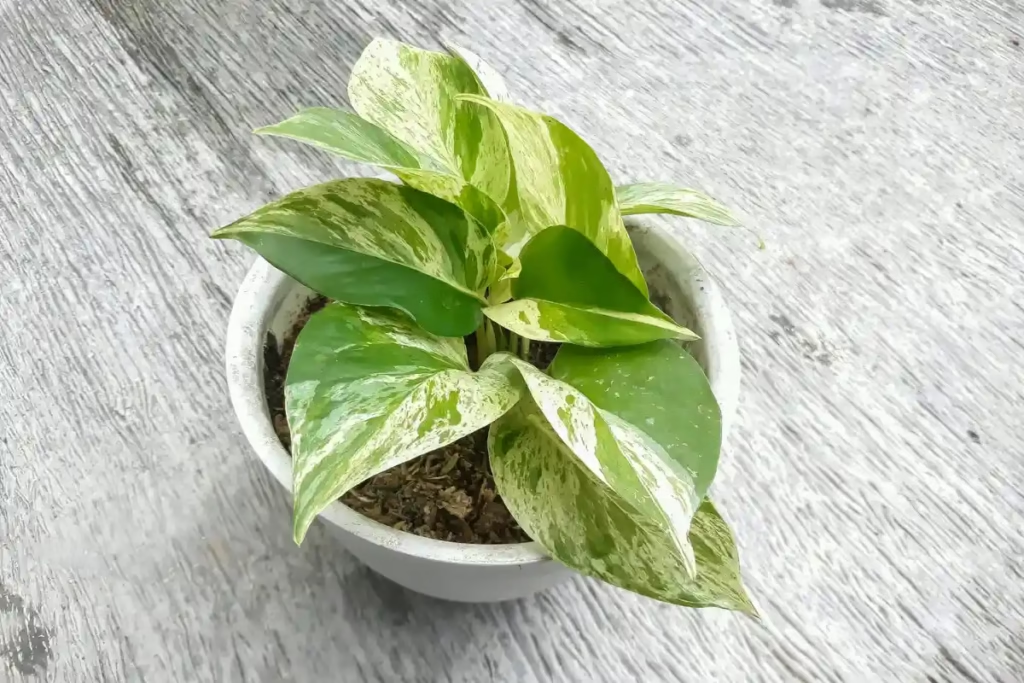
If you prefer softer foliage and a fuller, bushier look, pick a philodendron. It rewards steady care with dense, cascading leaves perfect for hanging baskets or trellises.
